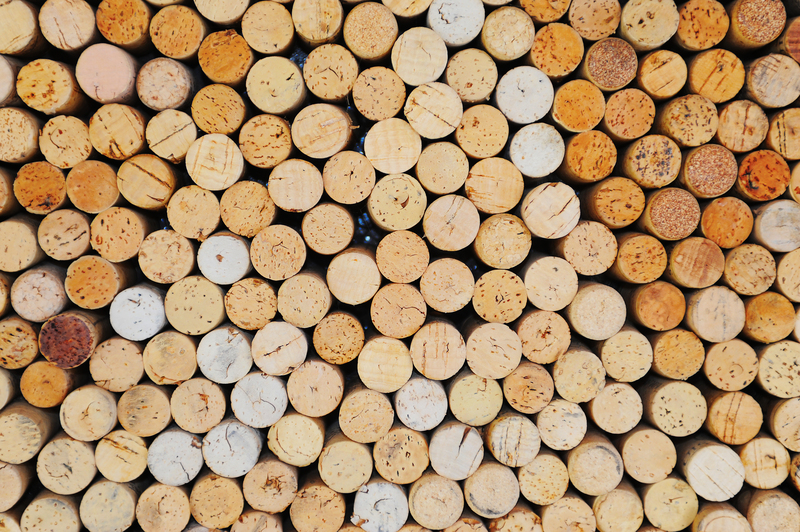
Waste Through the Ages: How Societies Have Adapted Over Time
Understanding the history of waste and society's ever-evolving relationship with rubbish is key to recognizing our modern challenges--and opportunities. From ancient rubbish pits to cutting-edge recycling, the journey of garbage management reflects both technological progress and shifts in cultural values.
The Prehistoric Roots of Waste
Human waste production didn't begin with modern industrialization. In fact, prehistoric communities generated waste in the form of animal bones, broken tools, and leftover plant matter. These early groups typically maintained tight-knit communities with a keen sense of stewardship over their environment.
- Limited Material Waste: Most items were made from natural materials, making much of the initial waste biodegradable.
- Midden Heaps: Archaeologists uncover ancient "middens"--essentially rubbish piles--providing insights into diet, tool usage, and even social organization.
- Close Loop Living: Little was wasted; tools were repaired, bones and hides repurposed, and organic matter decomposed naturally.
Waste Management in Ancient Civilizations
When people settled and civilizations grew, so did problems with waste and sewage. Ancient societies devised complex systems to handle refuse and protect their citizens.
Mesopotamia and Egypt
- Early Sewage Channels: The city of Babylon had clay pipes for wastewater, separating clean drinking water from waste.
- Nile-Based Disposal: In Egypt, rivers acted as natural disposal systems, but waste sometimes built up, leading to regulations and civic initiatives.
Greco-Roman Solutions
- Public Latrines and Communal Baths: Romans engineered sewer systems (like the Cloaca Maxima) to transport waste away from population centers.
- Street Cleaning: In Athens and Rome, officials were tasked with removing rubbish, recognizing its impact on health and aesthetics.
Asian Innovations
- China's Night Soil Economy: Human and animal manure were prized fertilizers; sophisticated collection systems minimized waste and fed agriculture.
- Japanese Recycling Tradition: Longstanding practices in Japan emphasized efficient resource use--nothing, not even old paper, went to waste.
Medieval Attitudes and Challenges
The collapse of centralized systems in the medieval era led to dramatic changes in waste management. Cities grew, but sanitation lagged behind--ushering in a period notorious for filth and disease.
- Waste in the Streets: In crowded cities like London and Paris, waste was often tossed into roads, rivers, or moats, creating public health hazards.
- Guild Regulation: Some trades, like tanners and butchers, managed offal and effluents through guild guidelines and common sense.
- Night Soil Collectors: Workers collected human waste at night for later use as fertilizer--a practice with deep roots but limited sanitation.
These practices fostered awareness about the need for structured garbage disposal, setting the stage for future innovation.
The Industrial Revolution and the Rise of Modern Waste
The advent of industrialization radically changed the nature and volume of waste. Cities swelled, consumption soared, and entirely new types of garbage emerged.
- Inorganic Waste Increases: Mass production introduced glass, tin, and plastic--items that couldn't simply rot away or be reused in old ways.
- Public Health Movements: Filth and debris in Victorian cities spurred the first municipal sanitation departments. The "Great Stink" of London (1858) famously prompted parliament to overhaul waste infrastructure.
- Landfills and Incineration: Societies began to bury trash at scale or burn it to reduce volume, creating the early forms of today's waste management systems.
20th Century Waste Adaptation: Consumer Culture and Environmentalism
The 1900s saw an explosion of consumer goods. With convenience came disposable packaging and single-use products, increasing the waste burden like never before.
- Packaging and Plastics: The post-WWII era introduced packaged foods, plastics, and processed materials, drastically changing what society threw away.
- The Birth of Recycling: The environmental movement of the 1970s led to the birth of recycling programs. The first Earth Day in 1970 emphasized waste reduction as a civic duty.
- Composting and Source Separation: Cities experimented with separating recyclables, organics, and garbage at the source--aiming for waste reduction and resource recovery.
- Landfills Evolve: The engineering of sanitary landfills ensured containment of leachate and landfill gas, addressing pollution risks.
Adapting Today: Circular Economies and Zero Waste Goals
As the consequences of waste become ever clearer--from plastic-laden oceans to overflowing dumps--modern societies are innovating, motivated by a vision for a more sustainable future.
Circular Economy Principles
- Designing Out Waste: Manufacturers are increasingly creating products that can be repaired, reused, or readily recycled.
- Product Stewardship: Extended Producer Responsibility (EPR) laws hold manufacturers accountable for the full lifecycle of their products, promoting eco-friendly design and take-back programs.
- Sharing Economies: By sharing, renting, or leasing products, people reduce waste and maximize utilization. Car-sharing and tool libraries exemplify these trends.
The Zero Waste Movement
- Community Initiatives: Some cities (e.g., San Francisco, Kamikatsu in Japan) have set ambitious targets to divert over 90% of their waste from landfills.
- Innovation and Biomimicry: Designers seek materials that mimic nature's cycles, creating products that can safely return to the earth or industrial use.
- Consumer Power: Shoppers increasingly demand package-free, durable goods, or products from recycled sources. Bulk shops and refill stations are on the rise.
Technology continues to drive change, with waste-to-energy plants, advanced material sorting, and bioplastic development all reshaping what's possible in resource recovery and reuse.
Global Perspectives: Developing Nations and Informal Recyclers
Adaptation doesn't look the same everywhere. In many developing countries, much of the waste management is informal.
- Waste Pickers: Millions around the world earn a living collecting recyclables from garbage dumps, supplying raw material for industrial production.
- Resourcefulness: In places with scarce resources, high rates of repair and reuse often result in less waste per capita compared to wealthier societies.
- Challenges Remain: Lack of infrastructure can lead to pollution and health hazards, highlighting the need for investment and support.
Differing regional strategies show that adaptation to waste is as much about cultural context as available technology.
Key Milestones in the Evolution of Waste Management
- Ancient sewer systems (Babylon, Rome) laid the groundwork for separating people from hazardous waste.
- Guild-based regulations and night soil economies offered early forms of resource recovery and risk reduction.
- The sanitary movement of the 19th century professionalized waste collection and disposal in cities worldwide.
- Recycling programs and environmental legislation in the late 20th century signaled a shift toward sustainability.
- The circular economy and zero waste goals are influencing everything from product design to policy today.

Conclusion: Lessons from the Past, Challenges for the Future
By tracing the history of waste and its management, we see that societies continually adapt their approach to rubbish. From the communal middens of the Stone Age to modern eco-smart cities, our relationship with garbage mirrors advances in technology, population size, urbanization, and shifting values.
- Waste isn't a new problem--it's as old as society itself.
- Human ingenuity has consistently risen to the challenge, whether through low-tech reuse or high-tech recycling plants.
- The need for adaptation is ongoing as resource scarcity and environmental impact intensify.
The future of waste management depends on our willingness to innovate and rethink value, turning refuse into resource just as our ancestors did. Understanding waste through the ages reveals that sustainable living isn't new--it's a return to practices that valued stewardship, resource efficiency, and community well-being.
By learning from history, we can create a more resilient, clean, and circular world--where waste is not the end, but the beginning of something new.
Frequently Asked Questions
- How did ancient societies manage waste?
Early civilizations used sewers, midden heaps, and waste collectors to separate and process rubbish, often repurposing organic material and implementing municipal cleanup rules. - What is the biggest change in waste management over time?
The industrial revolution introduced large quantities of persistent, inorganic waste--creating new challenges handled by modern landfill, incineration, and recycling systems. - How can modern cities improve waste adaptation?
By embracing circular economy principles, investing in recycling and composting, and educating people about waste reduction and product reuse.